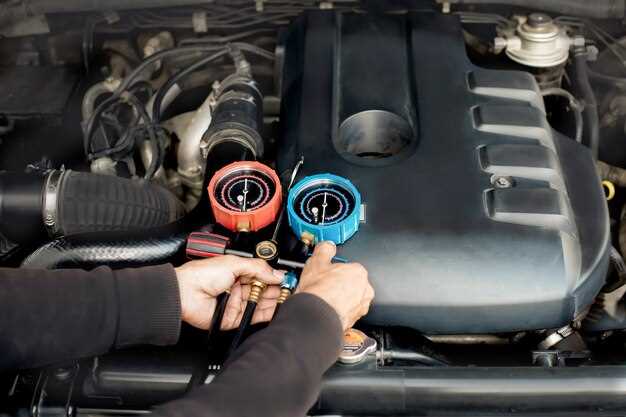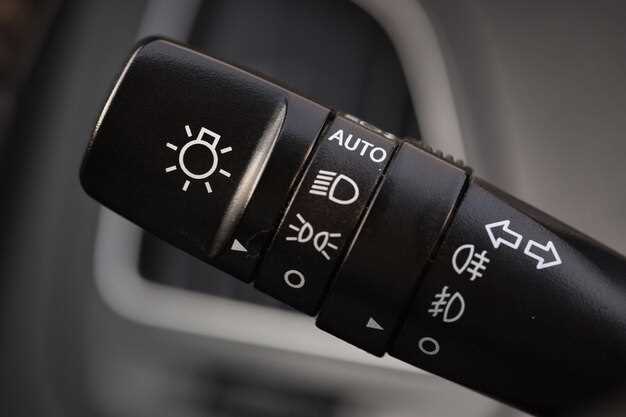
Maintaining the engine temperature within an optimal range is crucial for the overall performance and longevity of your vehicle. An engine that operates too hot can lead to serious damage, while one that runs too cold may not function efficiently. Understanding the role of the cooling system, particularly the radiator, is essential for every car owner.
The cooling system works by circulating coolant through the engine, absorbing heat and transferring it to the radiator. Here, the heat dissipates into the air, allowing the engine to maintain its preferred operating temperature. Factors such as coolant levels, radiator condition, and thermostat functionality all play a vital role in this process. Neglecting any of these components can lead to overheating or underperformance.
This article will explore various methods to effectively manage engine temperature. From regular maintenance checks to the integration of aftermarket cooling solutions, you will gain insights into how to keep your engine running smoothly and efficiently. Understanding these techniques is not just beneficial for your vehicle; it also contributes to safer driving experiences and reduced emissions.
Understanding Your Engine’s Operating Temperature Range

Every engine has a specific operating temperature range that is crucial for optimal performance and longevity. Typically, this range falls between 195°F and 220°F (90°C to 105°C) for most modern vehicles. Staying within this range is essential to ensure efficient combustion and minimize wear and tear on engine components.
The engine cooling system plays a vital role in maintaining this temperature. It consists of several components, including the radiator, water pump, thermostat, and coolant. The radiator dissipates heat generated during combustion, allowing the coolant to absorb excess heat and then release it into the atmosphere. If the radiator fails or is obstructed, the engine can quickly overheat, pushing it beyond the ideal temperature range.
Monitoring the engine temperature is crucial for identifying potential issues. If the engine runs too cool, fuel efficiency may decrease, while excessive heat can lead to severe damage. Regularly checking the coolant levels and ensuring the radiator is functioning properly will help maintain the desired temperature. Additionally, keeping the cooling system in good condition can prevent sudden temperature spikes, enhancing overall engine reliability.
Signs of Overheating and How to Address Them
Recognizing the symptoms of an overheating engine is crucial for maintaining your vehicle’s performance and longevity. Common signs include:
1. Temperature Gauge Reading: If your vehicle’s temperature gauge rises into the red zone, it’s a clear indication that the engine is overheating. Keep an eye on this gauge during your drive.
2. Warning Light: Most modern cars come equipped with a warning light that illuminates when the engine temperature exceeds safe levels. Take immediate action if this light comes on.
3. Steam or Smoke: Visible steam or smoke coming from the hood of your vehicle is a serious sign of overheating. This often indicates severe engine damage if not addressed promptly.
4. Unusual Smells: A sweet, syrupy odor can signal coolant leakage, while burning oil or overheating could produce acrid scents. Be alert to these unusual smells that could indicate radiator issues.
5. Performance Issues: If you notice a drop in engine performance, such as sluggish acceleration or engine knocking, overheating may be the culprit. Always investigate performance declines.
Addressing overheating involves several immediate steps:
A. Pull Over Safely: As soon as you notice any signs of overheating, find a safe spot to pull over and turn off the engine. This helps prevent further damage.
B. Let the Engine Cool: Wait for the engine to cool down before opening the hood. This can take a minimum of 30 minutes. Do not attempt to remove the radiator cap while the engine is still hot, as it can lead to burns.
C. Check Fluid Levels: Inspect the radiator coolant and engine oil levels. Low coolant can lead to overheating, so consider adding more if needed. If the coolant is leaking, find the source and address it.
D. Look for Blockages: Ensure that the radiator and vents are clear of debris, leaves, or dirt, which can obstruct airflow and cooling efficiency.
E. Seek Professional Help: If basic checks do not resolve the issue, it is advisable to consult a mechanic. They can assess for problems such as a faulty thermostat, a damaged water pump, or a leaking radiator.
By recognizing the signs of an overheating engine and knowing how to respond, you can protect your vehicle from potentially costly repairs and ensure a smooth driving experience.
Maintaining Your Radiator for Optimal Performance
Your vehicle’s radiator plays a crucial role in maintaining the engine’s cooling system. A well-maintained radiator ensures that the engine temperature remains within an ideal range, preventing overheating and potential damage. Here are essential tips for radiator maintenance to achieve optimal performance.
| Maintenance Task | Description | Frequency |
|---|---|---|
| Inspect for Leaks | Regularly check the radiator and hoses for any signs of coolant leaks. Look for puddles under the vehicle or signs of corrosion. | Monthly |
| Flush the Radiator | Over time, debris and sediment can accumulate. A complete flush removes contaminants, allowing for efficient cooling. | Every 2 years |
| Check Coolant Levels | Ensure the coolant level is adequate and the mixture of antifreeze and water is correct for your climate. | Monthly |
| Inspect the Radiator Cap | A faulty radiator cap can cause loss of pressure and lead to overheating. Replace it if it shows signs of wear. | Annually |
| Clean the Radiator Fins | Remove dirt and debris from the fins to enhance airflow, preventing overheating during operation. | Every 6 months |
By implementing these maintenance tasks, you can ensure your radiator operates effectively, providing necessary cooling for your engine and contributing to overall vehicle reliability. Avoid neglecting your radiator to maintain optimal temperatures and prolong engine life.
Choosing the Right Coolant for Your Vehicle
Selecting the appropriate coolant for your vehicle is essential for maintaining optimal engine performance and temperature control. The right coolant helps in efficiently transferring heat away from the engine, preventing overheating and potential damage.
Here are key factors to consider when choosing the right coolant:
- Type of Coolant: There are several types of coolants, including ethylene glycol and propylene glycol-based fluids. Ethylene glycol is more common and effective at lower temperatures, while propylene glycol is less toxic and more environmentally friendly.
- Mix Ratio: Coolants often come pre-mixed or in concentrated forms. Verify whether you need to dilute the concentrated coolant with water, and ensure the correct mixture for effective cooling and freezing point protection.
- Compatibility: Make sure to choose a coolant that is compatible with your vehicle’s engine materials. Different coolant formulations can vary in their effects on metal, rubber, and plastic components.
- Temperature Range: Consider the environmental conditions your vehicle will be exposed to. Some coolants perform better in extreme cold, while others excel in high-temperature scenarios.
- Maintenance Schedule: Pay attention to the recommended service intervals for coolant replacement. Regularly replacing or flushing your coolant keeps the cooling system clean and efficient.
Following manufacturer specifications is also critical. Always refer to your vehicle’s owner’s manual for the recommended coolant type and specifications. Proper coolant selection and maintenance play a significant role in ensuring your engine operates at ideal levels and avoids overheating issues.
Inspecting and Replacing Cooling System Components
Regular inspection and maintenance of the cooling system components are crucial for ensuring that your engine operates at optimal temperatures. The cooling system is comprised of various parts, each playing a vital role in regulating engine heat. Key components include the radiator, water pump, thermostat, hoses, and coolant reservoir.
Start by examining the radiator for any signs of damage, such as leaks or corrosion. A well-functioning radiator is essential for dissipating heat effectively. Check the coolant levels and ensure that the fluid is clean and free from contaminants. If the coolant appears rusty or has debris, a flush and replacement may be necessary.
The water pump circulates coolant throughout the engine and radiator. Inspect it for any leaks or unusual noises, which can indicate a failing pump. If you notice any signs of wear, it is best to replace it proactively to prevent overheating.
The thermostat regulates coolant flow based on the engine’s temperature. A malfunctioning thermostat can cause the engine to overheat or run cool. Testing it periodically can help avoid unnecessary repairs. If it is stuck open or closed, replacing it is essential to maintain proper engine temperatures.
Hoses should be checked for cracks, bulges, or leaks. These rubber components can degrade over time due to heat exposure and should be replaced if any signs of wear are present. Ensure all connections are secure to prevent coolant loss.
Finally, always use the correct coolant type specified for your engine. Mixing different coolant types can lead to chemical reactions that diminish cooling efficiency. By routinely inspecting and replacing these critical components, you can help maintain appropriate engine temperatures and prolong the life of your vehicle.
Tips for Driving in Extreme Temperatures

Driving in extreme temperatures can significantly impact your engine’s performance and longevity. Whether facing scorching heat or freezing cold, it’s vital to take precautions to maintain the ideal engine temperature and ensure your vehicle operates efficiently.
In hot weather, overheating is a common concern. Ensure your radiator is filled with the appropriate coolant mixture. Regularly check for leaks or blockages that could impair its function. If you notice the temperature gauge rising, pull over safely and allow the engine to cool down before investigating potential issues.
Additionally, use your air conditioning moderately. While it can help maintain a comfortable cabin temperature, heavy use places extra stress on the engine, potentially causing overheating. Instead, consider using the vehicle’s ventilation system to reduce the load on the engine.
In cold conditions, engine components can become less efficient. Allow your engine to warm up before driving, as this ensures oil circulates properly and reaches ideal lubrication temperatures. Avoid revving the engine immediately after starting, as this can lead to damage.
Ensure your antifreeze levels are adequate and that there are no leaks in the cooling system. Check the battery, as cold weather can reduce its effectiveness, leading to starting problems. Keeping your engine in optimal condition will help combat the effects of extreme temperatures.
Lastly, monitor your dashboard gauges closely during both hot and cold weather. Being proactive can prevent unexpected breakdowns and keep your engine running smoothly.
